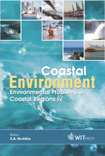Characteristics Of Sediment And Macrobenthos Communities In The Ishikari Coast
Price
Free (open access)
Transaction
Volume
58
Pages
Published
2002
Size
386 kb
Paper DOI
10.2495/CENV020231
Copyright
WIT Press
Author(s)
T Yamashita, Y Kuno & I Sakurai
Abstract
It is important to understand the influences of large rivers and coastal structures on the flow environment, sediment and benthos around them. This study clarifies the distribution of sediment types and the macrobenthos communities through field observations from the mouth area of the Ishikari River to near the Ishikari Bay New Port. The median diameter of sediment (d50) is smaller and the sorting coefficient (S0) and the percentage content of silt and clay (S) are larger in the river mouth area and inside the port than at other points in the same water depth zone. Except these points, d50 decreases as the water depth increases. The community structure of macrobenthos was analyzed by cluster analysis. In the river mouth area and inside the port, Polychaeta dominates and the index of diversity (H1) is small. The deep area has dominant Echinocardium cordatum, which is infaunal deposit feeder, even species diversity, and large H’ and J’. J’ is the index of equitability. Except these points, the group of Mactra chinensis is characteristic. This group area roughly corresponds with a clockwise circulating flow formation area affected by the breakwater. This suggests an influence of flow conditions on the entry success of constituent species, which is an important factor that determines the macrobenthos community structure. Sediments of each point are determined by both the flow that includes an influence of the port and the transport of sediment discharged from the river mouth, and macrobenthos suitable to the condition of flows and sediments of each point live there.
Keywords





